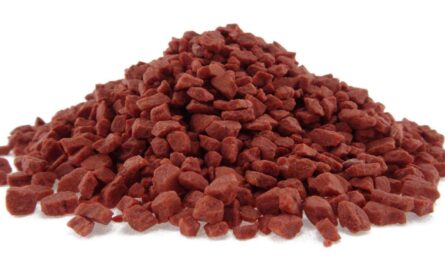Soil Active Herbicides
Soil active herbicides are the types of herbicides that remain active for an extended period of time in the soil after application and effectively control weeds as they emerge from the soil through their root uptake. The effectiveness of these herbicides depends on the herbicide compound remaining stable and available for weed root absorption over time. Some key soil active herbicides used extensively in agricultural production systems are discussed below.
Preemergence Herbicides
Preemergence herbicides are applied to the soil prior to weed seed germination and emergence from the soil. They work by killing weed seeds as they germinate or killing small seedlings as they emerge. Some commonly used preemergence herbicides include trifluralin, pendimethalin, ethalfluralin, oryzalin and benefin. These herbicides are non-selective and control a wide spectrum of annual grassy and broadleaf weeds. They are photo-stable and rainfall will not deactivate them easily. However, soil microbes will gradually breakdown these herbicides over time. Preemergence herbicides provide 3 to 6 months of weed control depending on soil conditions and herbicide used.
Postemergence Soil Active Herbicides
While preemergence herbicides act before weeds emerge, certain herbicides also demonstrate postemergence soil activity after being applied to the soil. These include compounds like diuron, linuron, bromacil which are absorbed by weed roots as they grow in the treated soil. They effectively control emerged weeds and also provide residual control of later germinating weeds. Being systemic, they are translocated upwards and control the entire emerged plant. However, postemergence soil active herbicides have a narrower weed control spectrum compared to preemergence herbicides.
Factors Affecting Soil Residual Activity
Many factors influence how long a soil applied herbicide remains active in the soil. Higher soil clay and organic matter content retains herbicides more tightly on soil particles, protecting them from microbial breakdown. Acidic soils also slow degradation compared to alkaline soils. Higher temperatures, rainfall and irrigation promote more rapid microbial activity and breakdown of herbicides. Soil degradation half-lives typically range from 4 to 12 weeks depending on these soil properties and weather conditions.
Tank Mixing for Broad Spectrum and Extended Control
Often multiple herbicides are tank mixed and applied together to widen the weed control spectrum and lengthen the residual control period achieved. For example, pendimethalin alone may control grass weeds for 8-10 weeks while adding trifluralin provides residual control of broadleaf weeds too for an extended period of 12-16 weeks. Bromacil mixed with diuron facilitates control of both annual and perennial weeds for 6 months or more. Tank mixes are therefore commonly used with soil applied herbicides.
Importance of Proper Application
Correct application techniques are vital for maximizing the performance of soil active herbicides. Herbicides must be incorporated mechanically or with irrigation to move them below the soil surface and reduce risks of volatilization or photodegradation losses. Deep placement below the weed seed zone also improves leaching into the root zone. Calibrating sprayers to deliver the right amount of spray volume per acre ensures uniform herbicide distribution in the soil. Following label guidelines on adjuvants, water volumes and weather restrictions helps achieve consistent, long-term weed control.
Safety and Environmental Concerns
While soil active herbicides provide effective and economical weed control, safety precautions must be followed for their use. These include wearing appropriate protective gear while handling or applying herbicides, restricting entry into treated areas until spray deposits dry, and following harvest intervals and grazing restrictions stated on labels. Some older, broad-spectrum herbicides like triallate and ethylene dibromide have been restricted due to environmental persistence and groundwater contamination risks over years of use. Newer, low use rate, rapidly degrading herbicides seek to minimize pollution issues. Best management practices like using tank mixes, rotational crops and cover crops aim to curb selection pressure and development of herbicide resistant weeds over time.
In summary, soil active herbicides remain a foundation technology for agronomic weed management due to their long-lasting residual control in the soil. Understanding factors affecting soil activity and adopting proper application techniques optimize their performance. While safety concerns require attention, newer formulations address environmental impacts better. With judicious usage guided by weed resistance management plans, soil herbicides will continue enabling productive weed free crops for the foreseeable future.
Note:
1. Source: Coherent Market Insights, Public sources, Desk research
2. We have leveraged AI tools to mine information and compile it




